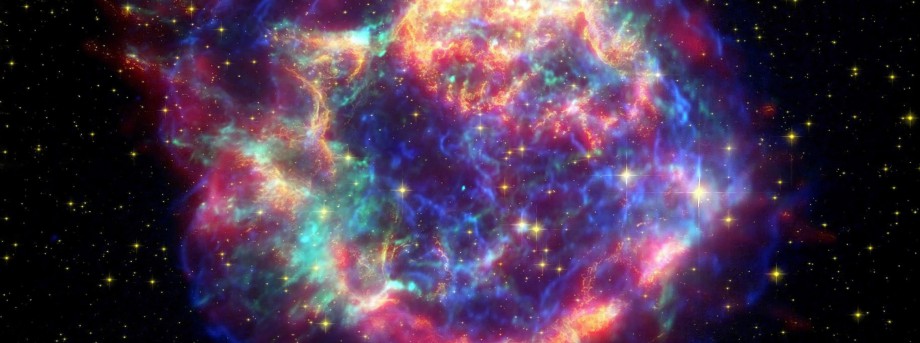The University of Nottingham
 Exchange online
Exchange online
Research Exchange
Massive neutrinos solve a cosmological conundrum

Scientists have solved a major problem with the current standard model of cosmology by combining results from the Planck spacecraft and measurements of gravitational lensing to deduce the mass of ghostly sub-atomic particles called neutrinos.
The team, from the universities of Nottingham and Manchester, used observations of the Big Bang and the curvature of space-time to accurately measure the mass of these elementary particles for the first time.
The recent Planck spacecraft observations of the Cosmic Microwave Background (CMB) – the fading glow of the Big Bang – highlighted a discrepancy between these cosmological results and the predictions from other types of observations.
Massive or massless?
The CMB is the oldest light in the Universe, and its study has allowed scientists to accurately measure cosmological parameters, such as the amount of matter in the Universe and its age. But an inconsistency arises when large-scale structures of the Universe, such as the distribution of galaxies, are observed.
Dr Adam Moss, from The University of Nottingham’s School of Physics and Astronomy said: “We observe fewer galaxy clusters than we would expect from the Planck results and there is a weaker signal from gravitational lensing of galaxies than the CMB would suggest.
“A possible way of resolving this discrepancy is for neutrinos to have mass. The effect of these massive neutrinos would be to suppress the growth of dense structures that lead to the formation of clusters of galaxies.”
Neutrinos interact very weakly with matter and so are extremely hard to study. They were originally thought to be massless but particle physics experiments have shown that neutrinos do indeed have mass and that there are several types, known as flavours by particle physicists. The sum of the masses of these different types has previously been suggested to lie above 0.06 eV (much less than a billionth of the mass of a proton).
‘Flavours’ of neutrinos
Dr Moss and Professor Richard Battye from The University of Manchester have combined the data from Planck with gravitational lensing observations in which images of galaxies are warped by the curvature of space-time. They conclude that the current discrepancies can be resolved if massive neutrinos are included in the standard cosmological model. They estimate that the sum of masses of neutrinos is 0.320 +/- 0.081 eV (assuming active neutrinos with three flavours).
Professor Battye added: “If this result is borne out by further analysis, it not only adds significantly to our understanding of the sub-atomic world studied by particle physicists, but it would also be an important extension to the standard model of cosmology which has been developed over the last decade.”
The paper is published in Physical Review Letters and has been selected as an Editor’s choice.
A copy of the paper is available from http://arxiv.org/abs/1308.5870orhttp://prl.aps.org/abstract/PRL/v112/i5/e051303
Leave a Reply
Other

Top prize for quantum physicist
A University of Nottingham physicist has won a prestigious medal from the Institute of Physics for […]

Zero carbon HOUSE designed and built by students comes home
Design and construct a low cost, zero carbon, family starter home, transport it to Spain, build […]